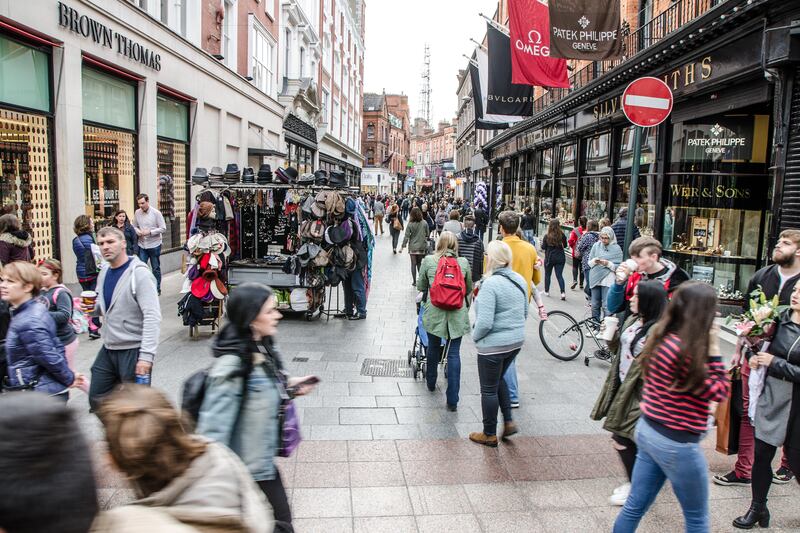Households paying a mortgage experienced a significantly higher rate of inflation in September, according to the Central Statistics Office (CSO).
While the headline rate of price growth in Ireland was 6.4 per cent in September, the CSO estimates households paying a mortgage experienced a general cost of living increase of 7.8 per cent compared with a rate of 5.6 per cent for households that owned their home outright.
Mortgage interest costs rose by 1.3 per cent in September and by a significant 49.5 per cent on an annual basis, reflecting 10 consecutive interest rate hikes by the European Central Bank (ECB).
The CSO said mortgage interest payments price changes were responsible for more than one-fifth of the annual change in the consumer price index (1.4 percentage points of the 6.4 per cent annual increase).
While noting that each household has a unique consumption pattern, the CSO’s study combined the latest consumer price figures with more detailed expenditure data to get an estimate of the inflation rate facing different income groups.
It found households with the highest incomes experienced higher inflation of up to 6.9 per cent, while some lower income households had annual estimated inflation of 6 per cent.
For households in the top income decile: mortgage interest payments were the largest contributor to their estimated inflation (2.2 percentage points of 6.9 per cent) followed by restaurants and hotels (1.6 percentage points), the CSO said.
Households that rent their home from a private owner had an estimated inflation rate of 5.3 per cent in September versus 5.9 per cent for those renting from a local authority.

Are cheaper energy prices finally on the way for Irish consumers?
The annual inflation rate for urban households was 6.5 per cent while estimated inflation stood at 6.3 per cent for rural households. Rural households, which are typically more reliant on cars and therefore on fuel, experienced sharper levels of inflation at the start of the inflation crisis.
Households where the reference person was aged under 35 had an estimated inflation rate of 5.8 per cent, the CSO said. However, when the household reference person was aged 35 to 64 it was estimated at 6.7 per cent and was 6.1 per cent for those aged 65 or over.
The household composition types with the highest estimated inflation rate (6.8 per cent) were households with one adult without children and households containing two adults with more than three children, or households containing three or more adults with children.
- Sign up for push alerts and have the best news, analysis and comment delivered directly to your phone
- Find The Irish Times on WhatsApp and stay up to date
- Our In The News podcast is now published daily – Find the latest episode here
















